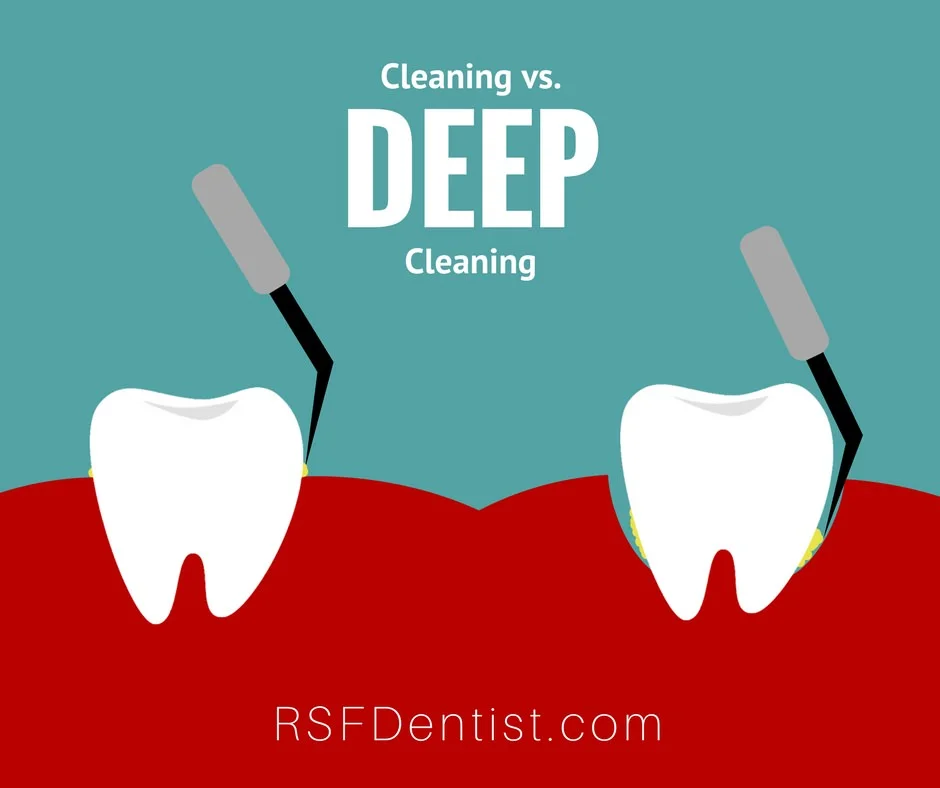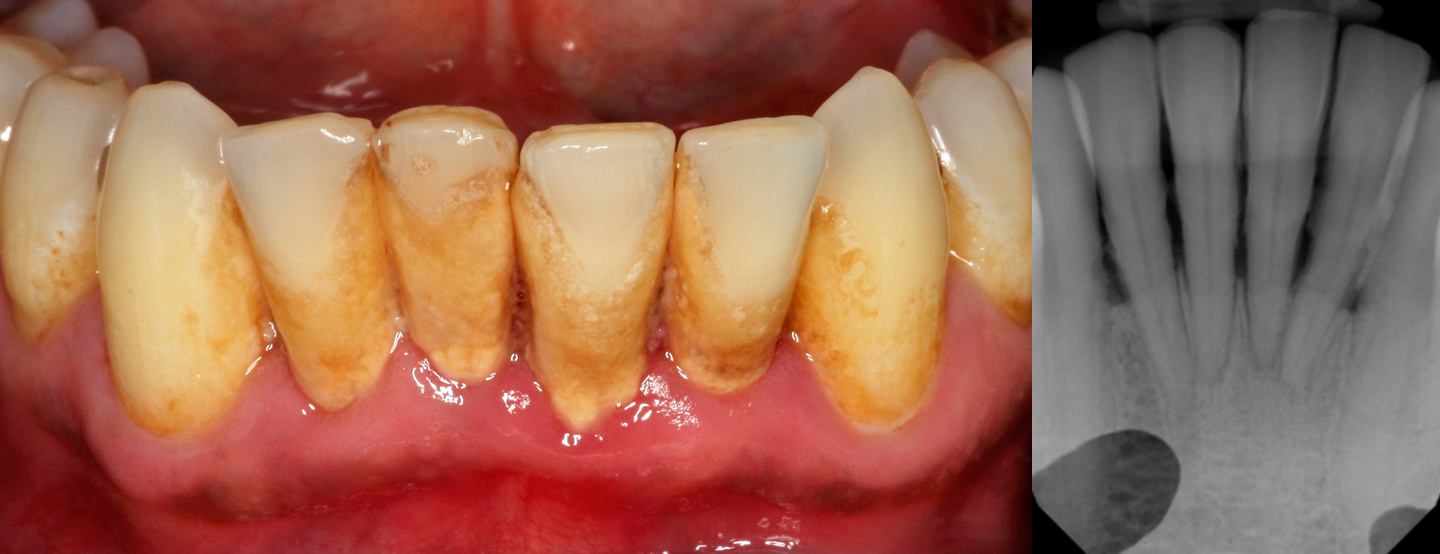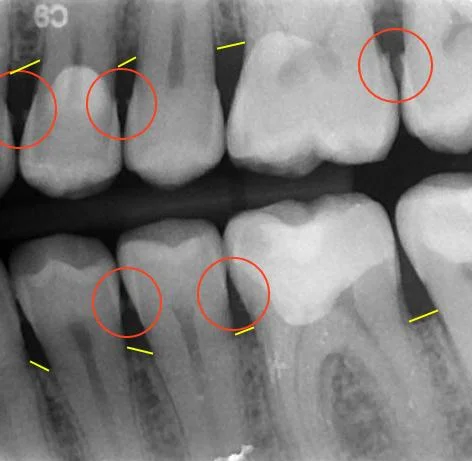What Are Deep Cleanings And Why Is The SRP So Misunderstood?
A deep cleaning, or Scaling and Root Planing (SRP), are the same thing. While SRP is the technical term, many dentists have taken to referring to them as "Gum Therapy", "Gingival Bacterial Control", or "Subgingival Therapy" because of the increasing public resistance to deep cleanings.
The bottom line:
If you have multiple >4 mm probing depths--you know that string of numbers your dentist or hygienist calls out during your exam--and you have bone loss, yes, you would benefit from an SRP. No, a regular cleaning is not sufficient here. The scientific literature is conclusive on the benefit and efficacy of the procedure.
What Is Scaling And Root Planing?
An SRP is essentially scraping the calculus off roots of your teeth, below the gum line, either with a metal scaler or with an ultrasonic scaler. The calculus forms from hardened plaque, which is naturally produced from food and saliva over time, and has to be mechanically removed from the teeth.
As periodontal disease progresses, natural pockets between your gum tissue and your teeth grow deeper, allowing calculus to form further down the root of the tooth. Over time, this further exacerbates the problem and leads to inflammation, bone loss, and ultimately infection and tooth loss.
The goal of an SRP is to remove this calculus, allowing the pockets to tighten back around the tooth. The image below is an individual with a severe state of the disease, and one we attempt to avoid with treatment.
There is tremendous evidence detailing the efficacy of the procedure (Source) and the success of the procedure being tied to the skill of the individual provider. (Source) In other words, the better your dentist or hygienist, the better the potential outcome.
However, SRP alone is not a magic bullet, (Source) and the necessity of an SRP is a clear indication that there is active periodontal disease, requiring regular periodontal maintenance, (typically every three months) to maintain the disease; (Source) think something between a deep cleaning and a regular cleaning. With shallow probing depths, (e.g. less than 4mm pockets), there is less measurable benefit to the procedure and it is considered unwarranted. However, the greater the initial probing depth, the more benefit the procedure provides. (Source) Smoking also has a negative impact on the success of deep cleanings (Source) and, as a whole, worsens periodontal disease.
Lasers, antibiotics, and phototherapy: Do They work?
Probably, but the degree to which they work is not fully established and the treatments tend to be expensive. (Source) These are a popular upsell for that reason. If you want to get everything you can out of your deep cleaning, it probably doesn't hurt, but it also may not offer as much benefit as you would like. The different adjunctive therapies would be an article of their own to do them justice. As it stands, there's no definitive 'yes' or 'no' to this question.
Deep Cleanings: Why The Push Back?
This is merely my opinion, but I think there are three main causes here.
First:
The term 'deep cleaning' is a bit of a disservice in that it likens an SRP to a regular cleaning, also called a prophylaxis. A deep cleaning is significantly more involved and used in far more specific situations than a typical dental cleaning.
Deep cleanings are coded and billed by quadrant of the mouth--basically, divide the mouth into four even sections--and typically cost $200 - $300 per quadrant. Typically one to two quadrants will be treated at a time, involves numbing the area to be worked on, similarly to a filling, and takes around forty-five minutes per quadrant to clean properly. Aside from the mechanical removal of calculus, the two have little in common.
Second:
Every list on the internet on 'what to watch out for at the dentist' call out deep cleanings as something to be wary of. It only takes a few minutes on Google to be left thinking that your dentist is trying to swindle you. With that said, yes, SRPs have been overused historically. We know they have been, and it's an extremely unfortunate situation.
There are clear diagnostic standards based on decades of research that provide guidelines for the use of the treatment, and it's extremely frustrating when that is not followed. SRPs have unfortunately become a staple of the unscrupulous and the large corporate dental offices out there that advertise a $39 exam, cleaning, and full mouth series of x-rays. We've written about this specific scenario before, and to once again caution our readers, you almost always will be taken advantage of by trying to take part in these 'deals'.
Third:
Arguably the largest reason, is that many insurance companies, in their never-ending quest to save a buck, do everything in their power to deny coverage. By denying coverage for some arbitrary reason, the cost burden is placed onto their customer, the patient.
When confronted, the insurance company will state that the procedure was not necessary despite never actually seeing the patient, while simultaneously trying to place blame on the dentist for allegedly performing unnecessary work. This scenario can be mitigated with excellent documentation and x-rays by your dentist, but it's still an unfortunate reality.
Do I Really Need a Deep Cleaning?
The easiest way to avoid the situation is to never need one in the first place through proper oral hygiene. I know, I know, that's not why you're reading this. Well, unfortunately, there's no real easy way as a patient to know when you do or don't need a deep cleaning. If you ever have any doubt, get a second opinion. I am always happy to offer patients free second opinions, and I am never offended if a patient of mine seeks one out elsewhere.
As mentioned previously, I would recommend avoiding shopping for a dentist like you do a couples massage or a whale watching trip on Groupon, as you will inevitably save yourself significantly in the long run. With those two covered, your dentist should be explaining your probing depths and x-rays to you. (If your dentist or hygienist didn't take probing depths or x-rays, your dentist absolutely should not be calling for an SRP, so that should be a clear sign) Your dentist should also be able to show your bone loss to you on an x-ray.
The x-ray below was a patient of mine many years ago and is a really an ideal example of when an SRP is needed. While not always visible on an x-ray, in this example you can see calculus (circled in red) on the teeth below the gum line, as well as bone loss present (yellow lines indicate where the bone level currently is). The angulation of the bone level further indicates that bone loss has occurred. Bone loss should always be present before an SRP is performed.




